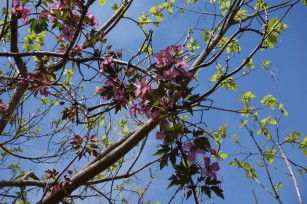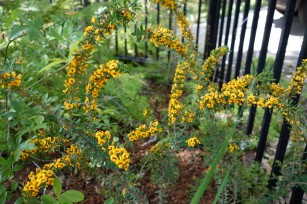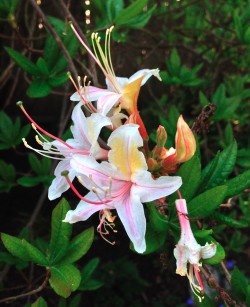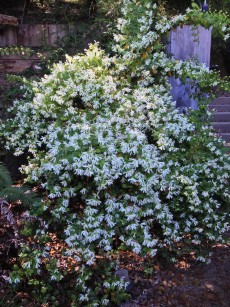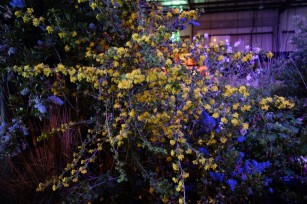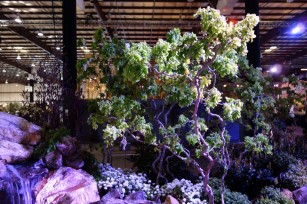Do you walk in your garden and see mounds of fresh soil? Maybe it's a trail of raised earth snaking across the lawn you see as you look outside the kitchen window drinking your morning coffee. We all have a gopher, mole or a vole story to share. Tragedy strikes when your 15 year old apple tree suddenly fails and 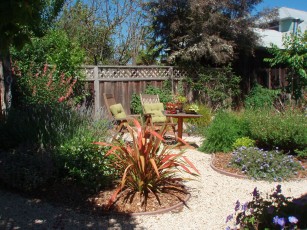 there'll be no apple pie this year.
there'll be no apple pie this year.
I remember my first flower and vegetable garden. It was glorious. I was devastated, however, when the first of the border marigolds were sucked back into the earth one at a time. Then the tomatoes went. Finally, my prize zinnias were victimized. I won't go into how the problem was solved but it involved a bassett hound named after a popular green apple.
There are better ways to deal with problem critters in the garden and at a recent workshop at UC Farm & Garden I learned from an expert that now is the optimum time to stop them.
Thomas Whittman first became interested in gardening as a student at UCSC. He helped build the garden. Later as an organic farmer at Molino Creek Farm up the coast he again encountered gophers, moles and voles that played havoc with the growing of produce. About 15 years ago he started his own business, Gophers Limited, to educate and provide his services in the control of garden critters without poisons.
Thomas pointed out that simply poisoning a gopher, mole or vole doesn't solve the problem as the feeding burrows are re-occupied sometimes within hours. Also those anti-coagulant toxins can be passed on to pets, hawks and other predators that might eat them. That's why he advocates the use of mechanical live and lethal trapping methods in the place of poisons. Preserving our environment and water resources is his top priority.
Did you know that gophers are solitary, nocturnal, territorial and active year round? All those mounds you see are created by one animal as the female will drive off her young after just a few weeks of giving birth. If you dispatch a female before she gives birth in the spring you can often solve your problem. Don't give her the chance to have another litter in June. She can live for 3-5 years.
There are no gophers in the Northeast but the Golden gopher of the Midwest is twice as large as our Pocket gopher who got it's name as they love to store food in side pockets inside their head. Gophers love sprouts and apples and will gorge themselves to destruction if they are plentiful.
Perhaps you have a mole problem and are not troubled by gophers. Gophers Limited website can teach you how to tell the difference. Moles are carnivores and are one of the oldest animals on the planet. Arriving in our neck of the woods 40 thousand years ago via the land bridge that used to exist between Asia and Alaska, they are smarter than gophers. Members of the shrew family, they are hard to outsmart. In the 13th century the word shrewd came from these wily creatures.
Thomas mainly uses cinch traps for the control of gophers and trains others in their use. Other traps like the macabee trap need to be set up in the main burrow and this excavation takes longer than the 20 seconds required for a surface trap like the cinch. His website has many tutorials on traps and other methods of control. When the country fair comes around in September I'll be sure to look at the Agriculture History display of gopher traps dating back to the early 1900's.
I enjoyed a lively discussion of urban myths regarding gopher control. Juicy Fruit gum is not effective per studies at UC Davis. Chocolate ex-lax has not been studied so the jury is out on that one. Putting glass or dried rose cuttings with thorns down a hole is effective as gophers are hemophiliacs and will bleed to death if cut. Castor oil is effective for a short time as is coyote, cat or any other urine. Fish emulsion or meat products are deterrents as gophers are committed vegetarians. After trapping, Wittman always leaves the dead gopher in the hole. He claims they "get the message".
Are there plants that gophers won't eat? Wittman claims that he has seen gophers repeatedly avoid lavender, sage or salvia, rosemary, thyme and oregano. As a designer I have a slightly longer list of gopher resistant plants but always recommend planting in stainless steel gopher baskets anyway.
I have to chuckle at a list of plants supposedly not on a gopher's menu that I found in a magazine several years ago. Apapanthus was on the list. Wittman smiled as he shared some of his personal slides of huge gopher burrows right underneath an agapanthus. A female gopher gets her water from roots and hopefully it won't be from your favorite apple, camellia or daylily.
There is much more useful and educational information on Thomas Wittman's website.
Visit http://www.gopherslimited.com/

